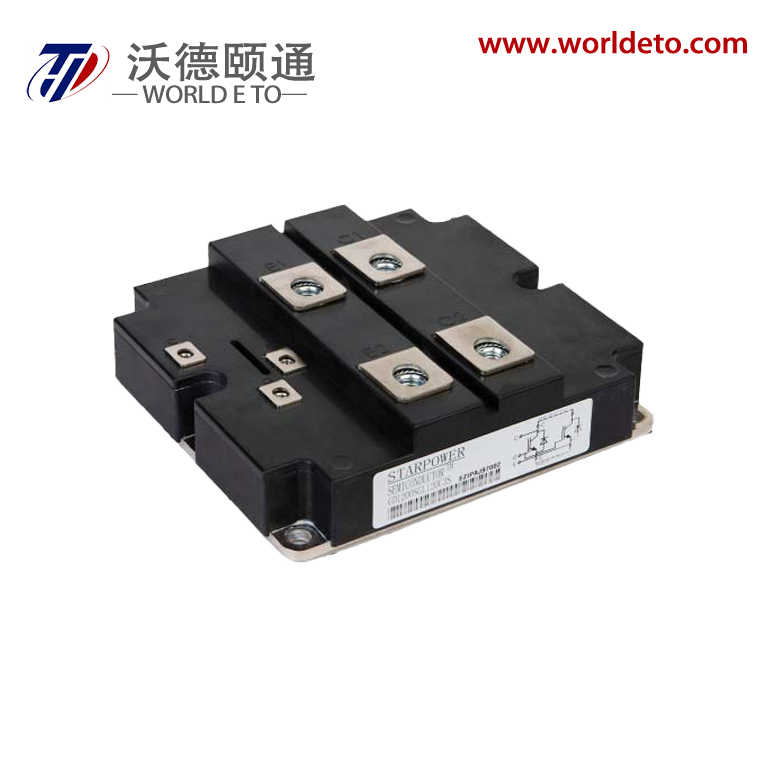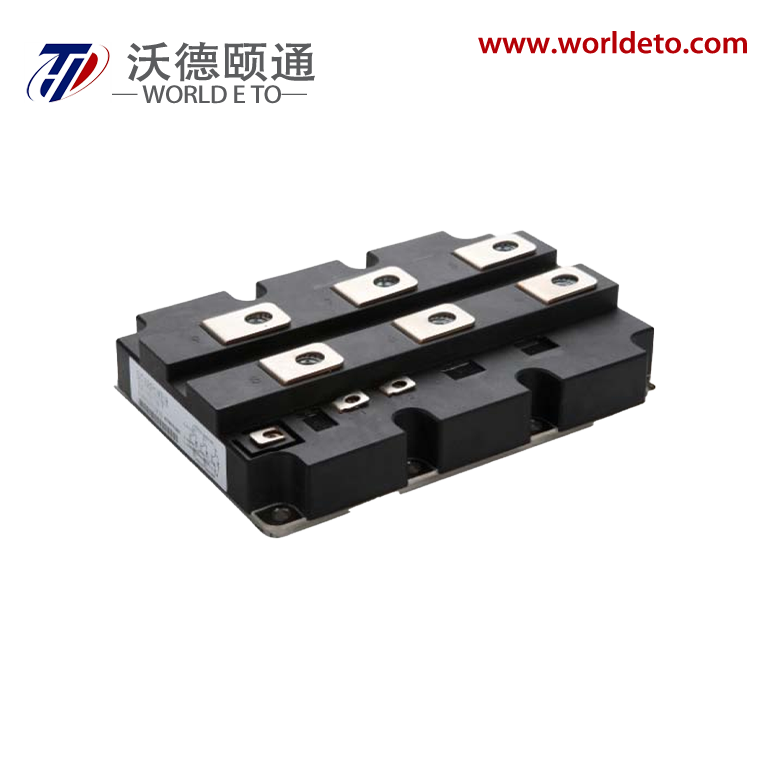The Precision Advantage of IGBT Modules in Motor Control
Introduction
Motor control tech has really changed the game when it comes to automation, boosting factory output, and saving on energy costs. Take a look at what's happening in the field right now, and one component keeps coming up again and again - those Insulated Gate Bipolar Transistors, or IGBTs for short. They've become essential parts in most motor drive systems these days. Why? Well, they switch fast enough to keep up with demanding applications while wasting minimal power during operation. Plus, they hold up surprisingly well even when pushed hard over long periods, which makes them pretty indispensable for manufacturers looking to maintain consistent performance without breaking the bank on maintenance or replacements.
Â
IGBT modules pack several important features into one package, merging their ability to handle large currents with quick switching times so they can manage electric motors with greater accuracy and efficiency. These components show up everywhere from cars to factory equipment, forming the backbone of systems where exact speed control matters, maintaining proper torque levels is crucial, saving energy becomes a priority, and steady power output is needed. What makes them stand out? Let's take a closer look at what sets these modules apart, how they actually work behind the scenes, where they're making an impact in practical settings today, and some tips on getting the most out of designs while keeping things running reliably over time.
Â
IGBT Technology and Accurate Speed Regulation
Getting accurate speed and torque control remains a big headache for motor systems when dealing with changing loads. IGBT modules tackle this issue using something called Pulse Width Modulation, or PWM for short. Basically, PWM lets engineers tweak both voltage and current levels by messing around with how long and how often the power switches turn on and off during each cycle. This gives much better control over motor performance even when conditions aren't stable.
Â
IGBT modules manage energy flow through motor windings by flipping transistors back and forth between on and off positions at high speeds. The result? Smoother changes in speed without those annoying jumps up or down when things get moving fast. Motors just run better overall when starting up or slowing down because everything stays balanced. Real world applications really benefit from this kind of instant control. Think about CNC machines cutting parts with razor precision, robotic arms assembling components exactly where they need to go, or servo drives maintaining tight tolerances. These systems simply cannot afford even minor timing errors, which makes good quality IGBT control absolutely essential for proper function.
Â
Compared to traditional transistor technologies or mechanical control methods, IGBTs exhibit shorter switching times, reduced latency, and improved electrical efficiency. Additionally, they are capable of handling high voltages and currents with minimal losses, which is essential for applications that require both high power and fine precision.
Â
Diode Integration and Energy Recirculation Efficiency
A major breakthrough in IGBT module design comes from incorporating freewheeling diodes into the mix. For anyone working with motor control systems needing regenerative braking capabilities or dealing with deceleration issues, these components become pretty much indispensable. Take variable frequency drives (VFDs) for instance. As motors start to slow down during operation, they actually produce energy that gets sent right back into the system. Without proper management of this returned energy, what happens? Well, most of it just turns into heat instead of being put to good use. This not only wastes valuable power but also puts extra strain on the thermal aspects of the whole setup over time.

When it comes to handling regenerative energy, diode integrated IGBT modules do something pretty clever they actually capture that leftover energy and send it back where it came from or store it somewhere useful. What does this mean for real world applications? Well, first off it cuts down on wasted energy which is obviously good news. But there's another benefit too systems run more efficiently when they're dealing with things like repetitive cycles or changing loads throughout the day. And let's face it, most industrial equipment doesn't work at constant capacity anyway. Managing energy flow both ways makes a big difference in practice. Companies see their electricity costs drop, equipment runs cooler so it doesn't wear out as fast, and all those components last longer before needing replacement.
Â
Moreover, the diodes act as buffers against voltage spikes during transitions between operational states. This feature plays a vital role in protecting delicate circuits and motors from potential damage during rapid switching events.
Â
Industrial Applications That Benefit from IGBT Modules
IGBT modules have widespread use across multiple industrial domains. Letâs examine three of the most prominent:
Â
Servo Drives and Industrial Automation
For servo systems to work properly, they need motion that's quick, smooth, and can be repeated consistently time after time. That's where IGBTs come into play. These components switch on and off really fast, which makes all the difference for how well the system controls itself. When there's less delay between when a command is given and when the motor actually moves, everything runs much better. We see this matter a lot in robot arms on factory floors, those automated machines that grab parts and move them around, and modern conveyor belts that adjust speed based on what's happening downstream. Get the timing right here, and the whole production line produces higher quality goods without wasting materials or causing downtime.
Â
Data from industrial automation case studies reveal that incorporating IGBT-based drives results in improved throughput, better motion control, and reduced wear on mechanical components due to smoother operation.
Â
Emergency Power Supply and Voltage Stabilization
IGBTs play a really important role in emergency power systems too, especially those Uninterruptible Power Supplies we all know as UPS units. These systems need stable voltage at all times, no exceptions. When there's a sudden change in what the system is powering or when the main electricity grid acts up, it often causes those annoying voltage drops or dangerous spikes. That's bad news for expensive equipment connected to them. The good thing is IGBT modules jump into action super fast to smooth out these wild swings in power. They basically act like shock absorbers for electrical systems, keeping everything running smoothly without anyone even noticing there was a problem in the first place.
Â
Their robustness under varying input conditions also makes them suitable for integration into backup power systems for hospitals, data centers, and critical infrastructure where downtime is unacceptable.
Â
Arc Welding and Precision Welders
When doing high precision arc welding work, getting the right amount of energy into the joint is absolutely critical. Too much heat causes all sorts of problems like warping metal or creating weak spots from overheating. Too little and the weld won't penetrate properly either. That's where IGBT based welders come into play. These machines let operators program exact current pulse patterns which makes a huge difference in weld consistency across different jobs. Look at what happens in real world applications - aerospace companies need these precise controls for aircraft components where even minor flaws could lead to catastrophic failures. Same goes for shipbuilders working on massive hull structures and pipeline manufacturers dealing with thousands of miles of tubing that must withstand extreme pressures without leaking.
Â
Spotlight: GD75FFX170C6SA IGBT Power Module
Among the many IGBT modules available, the GD75FFX170C6SA has distinguished itself as a high-performance solution for demanding applications.
Â
Technical Capabilities
Rated at 1700V, this module is engineered for high-voltage industrial environments. It can reliably manage large electrical loads, making it suitable for motor drives in heavy manufacturing, high-speed rail, and grid-tied energy systems.
Â
Its robust voltage tolerance ensures that the device operates safely under high-stress conditions, such as peak motor startups or high-torque demand cycles. Furthermore, the module is designed with thermal efficiency in mind, incorporating materials and layouts that optimize heat transfer and minimize hot spots.
Â
Design Integration Benefits
Another advantage of the GD75FFX170C6SA is its compact footprint. Space-saving designs are crucial for OEMs who need to reduce panel size without compromising performance. This module integrates easily into modular and scalable systems, allowing for flexible configurations in new or existing designs.
Â
Feedback from engineers and system integrators highlights how this IGBT model simplifies development workflows, shortens testing cycles, and reduces time-to-market for motor control solutions.
Â
Optimizing IGBT Motor Drive Systems: Key Design Considerations
Effective Thermal Management
IGBTs operate at high current densities, and without effective cooling, their efficiency and lifespan can be compromised. Overheating leads to junction degradation, slow switching behavior, and potential failure. To prevent this, engineers employ several thermal management strategies:
Â
Heat sinks are the first line of defense, absorbing and dissipating heat into the surrounding air.
Â
Forced air or liquid cooling systems are used in high-power systems to carry heat away from critical components.
Â
Thermal interface materials (TIMs) improve the contact between the IGBT and cooling plates, enhancing heat conductivity and lowering temperature gradients.
Â
Regular thermal inspections and sensor-based monitoring are also recommended to detect anomalies early and avoid unplanned shutdowns.
Â
Choosing the Right Switching Frequency
Switching frequency plays a major role in system performance. A higher frequency allows for more granular control of output voltage and current, resulting in smoother motor behavior and better response to control inputs. However, it also increases switching losses and thermal output.
Â
For example, servo systems and precision tools may benefit from frequencies above 10 kHz, while industrial fans or HVAC motors may operate efficiently at lower frequencies. Designers must weigh the trade-offs between efficiency, heat generation, electromagnetic interference (EMI), and component lifespan.
Â
By carefully selecting the switching frequency and implementing soft-start functions or dead-time controls, engineers can maximize the overall performance of the system without overloading components.
Â
Frequently Asked Questions (FAQ)
1ï¼What makes IGBT modules better than traditional transistors in motor control
IGBT modules combine the high-speed switching of MOSFETs with the high-voltage tolerance of bipolar transistors. This makes them ideal for high-power applications that require both precision and robustness.
Â
2ï¼Can IGBT modules improve energy efficiency
Yes. With integrated diodes and efficient switching behavior, IGBT modules help capture regenerative energy and reduce heat losses, resulting in lower power consumption and operational costs.
Â
3ï¼How do IGBT modules contribute to voltage stabilization in UPS systems
They respond rapidly to voltage fluctuations and load changes, maintaining steady output and protecting sensitive equipment during grid disturbances or outages.
Â
4ï¼What is the role of IGBTs in welding equipment
In welding, IGBTs regulate the flow of current precisely, enabling fine control over heat input and weld profile. This improves weld quality and reduces defects, especially in automated systems.
Â
5ï¼Whatâs special about the GD75FFX170C6SA module
This module supports 1700V, making it suitable for high-voltage applications. It offers robust thermal performance, compact design, and easy integration into modern motor drive systems.
Â
6ï¼How important is thermal management in IGBT systems
Very important. Without proper heat dissipation, IGBT modules can overheat, degrade, and eventually fail. Effective thermal design ensures safe operation and long component lifespan.
Â
7ï¼What is the optimal switching frequency for IGBT-based drives
It depends on the application. High-frequency switching is preferred for precision and fast response, while lower frequencies reduce switching losses. The choice should balance performance and energy efficiency.
Â
8ï¼Can IGBT modules be used in renewable energy systems
Yes. IGBTs are widely used in solar inverters, wind turbines, and energy storage systems due to their ability to handle high voltages and rapidly changing loads.

